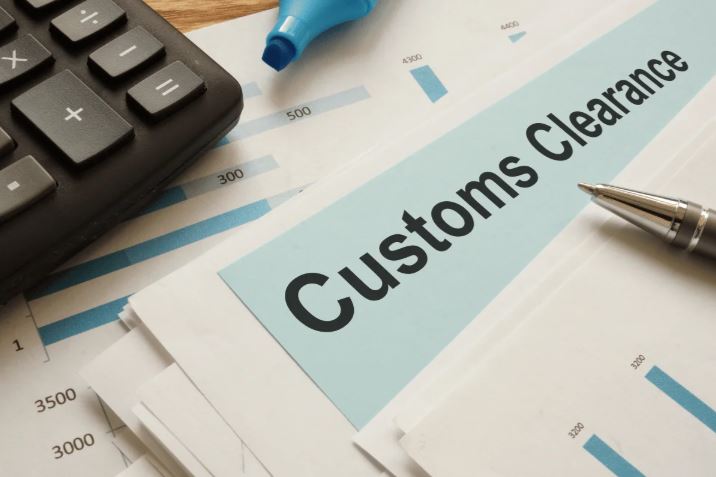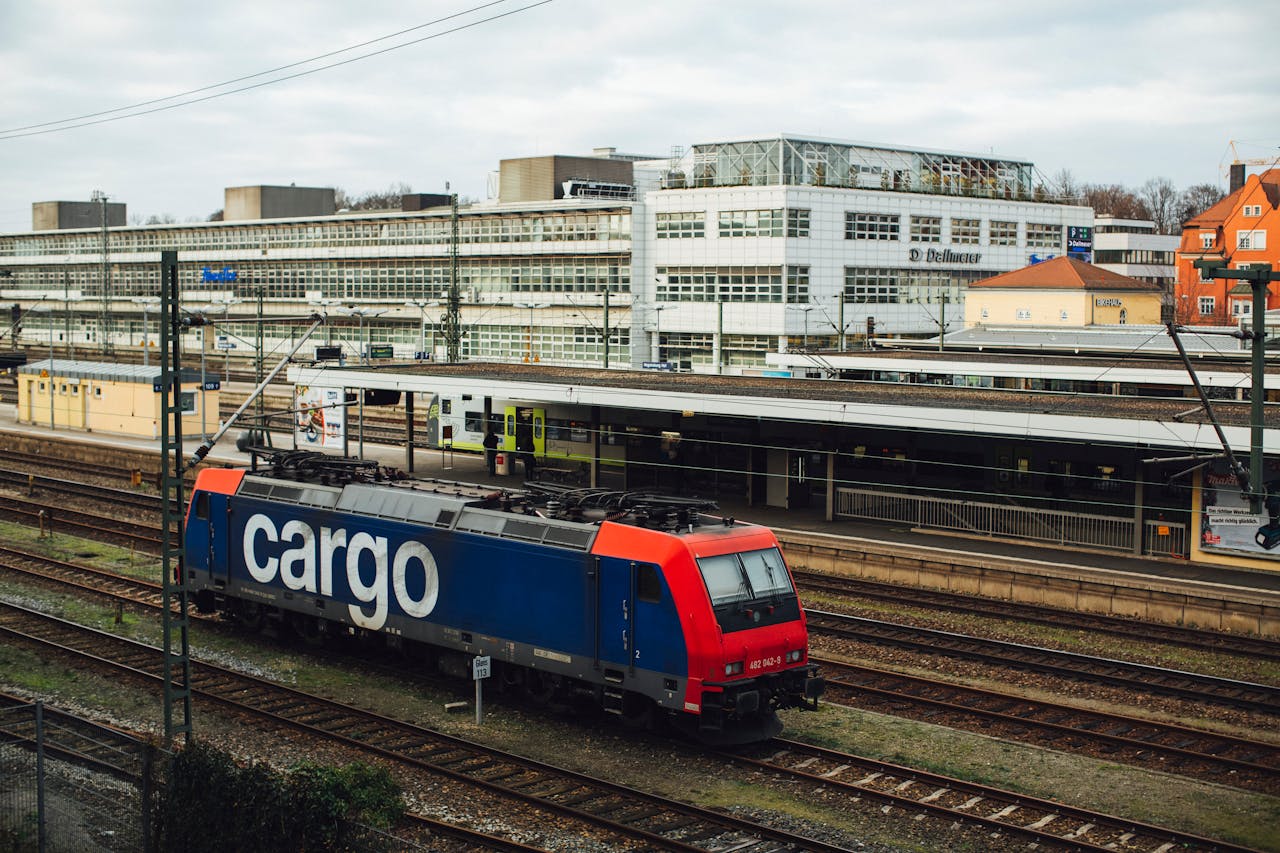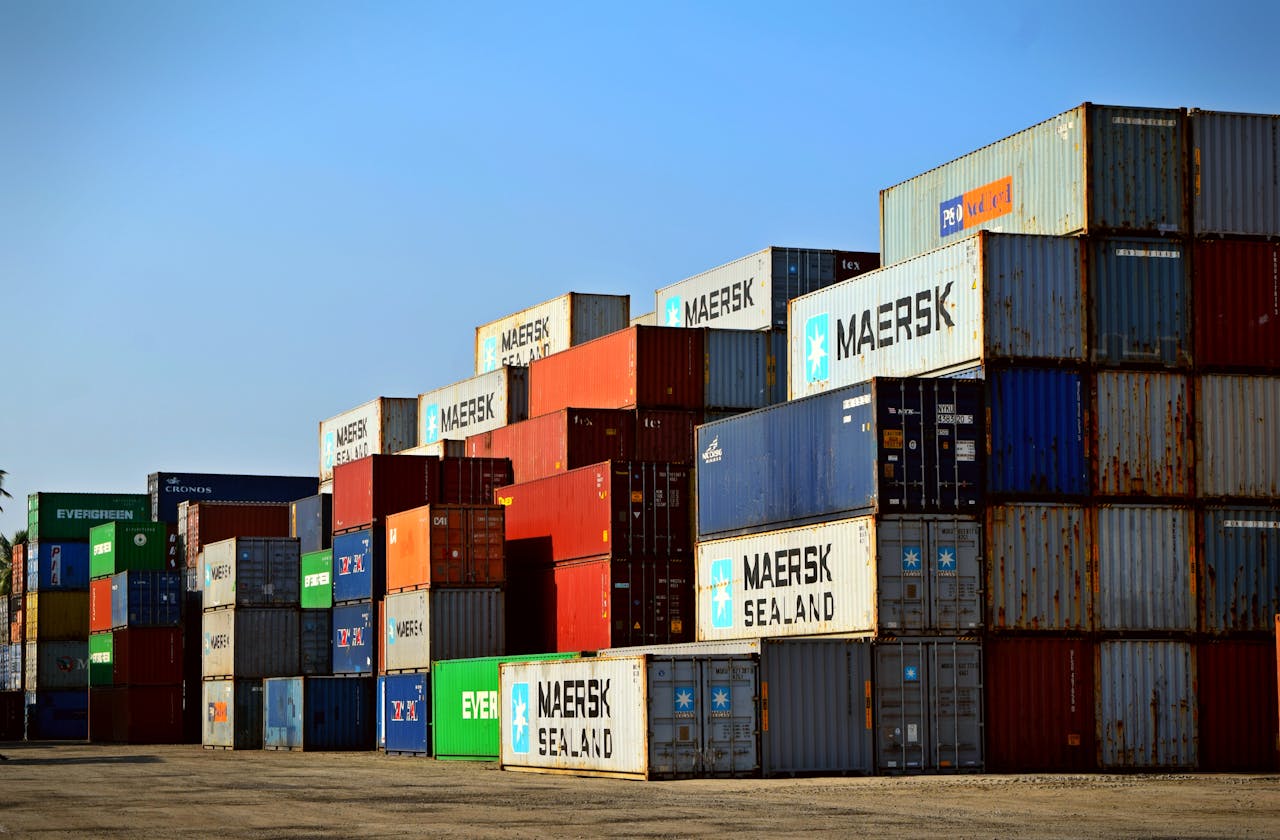Have you ever wondered what happens to your online purchase after it leaves the seller’s warehouse? Or how your business’s export shipment makes its way across borders? The answer lies in the intricate process of customs clearance.
Customs clearance is the gateway to international trade. It’s the process of inspecting and releasing goods that are imported or exported. While it may seem like a simple step, it’s a complex procedure involving a myriad of regulations, documentation, and fees. This guide aims to break down this process, providing you with a comprehensive understanding of customs clearance and its implications for businesses and individuals alike.
From understanding the basic concepts to navigating the complexities of customs regulations, we will cover everything you need to know. We will explore the key players involved, the essential documents required, and the potential challenges and pitfalls to avoid.
Whether you are a seasoned importer or exporter or just starting your international trade journey, this guide will equip you with the knowledge and tools to navigate the customs clearance process with confidence.
The Indispensable Role of Customs Clearance in International Trade
Customs clearance is the lifeblood of international trade, a critical process that ensures the seamless flow of goods across borders. It is more than just a bureaucratic hurdle; it’s a strategic lever that can significantly impact a business’s global operations, supply chain efficiency, and bottom line.
Why is Customs Clearance So Important?
Customs clearance is a critical process in international trade, and its importance cannot be overstated. Here’s why:
-
Enforcing Regulations and Safeguarding Borders:
Customs authorities are the gatekeepers of a nation’s economy. They enforce a myriad of regulations, including import and export quotas, product standards, and security protocols. This ensures that goods entering or leaving a country adhere to domestic and international laws, safeguarding national security and protecting consumers from harmful or counterfeit products.
-
Generating Government Revenue:
Import duties and taxes levied on goods entering a country are a significant source of government revenue. These funds are essential for financing public services, infrastructure development, and social programs. Efficient customs clearance procedures contribute to maximizing revenue collection while minimizing administrative burdens on businesses.
-
Facilitating Trade and Economic Growth:
Streamlined customs procedures are crucial for fostering international trade and economic growth. By expediting the release of goods, customs authorities can help businesses reduce inventory costs, improve cash flow, and meet customer demands more effectively. This, in turn, stimulates economic activity, creates jobs, and enhances a nation’s competitiveness in the global marketplace.
-
Risk Management and Counteracting Illicit Trade:
Customs authorities play a vital role in identifying and mitigating risks associated with international trade, such as terrorism, drug trafficking, and intellectual property theft. By employing advanced risk assessment techniques, customs officers can detect and intercept illicit goods, protecting national security and safeguarding the integrity of supply chains.
-
Data-Driven Decision Making and Economic Insights:
Customs data provides valuable insights into trade patterns, economic activity, and consumer behavior. By analyzing this data, policymakers can make informed decisions, identify emerging trends, and assess the impact of trade policies. This data-driven approach enables governments to optimize trade strategies, attract foreign investment, and promote sustainable economic development.
By understanding the intricacies of customs regulations, leveraging technology, and fostering strong partnerships with customs authorities, businesses can navigate the complexities of international trade and unlock new opportunities for growth and prosperity.
The Customs Clearance Process
The customs clearance process is a multi-faceted operation that involves a series of steps to ensure the smooth flow of goods across international borders. While the specific procedures may vary from country to country, the core elements remain consistent. Let’s delve deeper into these key stages:
1. Import/Export Declaration: The First Step in International Trade
The import/export declaration is the cornerstone of the customs clearance process. It’s a formal document submitted to customs authorities, providing detailed information about the goods being imported or exported. This declaration serves as a roadmap for the entire clearance process.
Key Information Included in the Declaration:
- Product Description: A precise description of the goods, including their quantity, weight, and dimensions.
- Country of Origin: The nation where the goods were manufactured or produced.
- Intended Use: The purpose for which the goods are being imported or exported.
- Harmonized System (HS) Code: A standardized classification system used to identify products for customs purposes.
- Invoice Value: The declared value of the goods, which is used to calculate duties and taxes.
- Required Permits or Licenses: Any specific permits or licenses necessary for the importation or exportation of the goods.
Why is Accurate Declaration Crucial?
- Smooth Clearance: An accurate and complete declaration helps expedite the customs clearance process.
- Avoiding Penalties: Incorrect or incomplete declarations can lead to delays, fines, or even seizure of goods.
- Correct Duty and Tax Assessment: Accurate information ensures that the correct duties and taxes are applied.
By providing accurate and timely declarations, businesses can significantly improve the efficiency of their international trade operations.
2. Document Verification: Ensuring Accuracy and Compliance
Once the import/export declaration is submitted, the next crucial step in the customs clearance process is document verification. Customs authorities meticulously examine all supporting documents to ensure their accuracy, authenticity, and compliance with relevant regulations.
Key Documents Verified:
- Commercial Invoice: A detailed invoice from the seller to the buyer, outlining the goods, quantities, prices, and terms of sale.
- Packing List: A document that specifies the contents of each package, including the quantity, weight, and dimensions of the items.
- Bill of Lading: A legal document issued by a carrier to acknowledge receipt of cargo for shipment.
- Certificate of Origin: A document certifying the country of origin of the goods.
- Permits and Licenses: Any required permits or licenses, such as health certificates, import licenses, or export licenses.
The Importance of Document Verification:
- Preventing Fraud: Document verification helps identify fraudulent activities, such as undervaluation or misrepresentation of goods.
- Ensuring Compliance: It ensures that the imported or exported goods comply with customs regulations and other relevant laws.
- Facilitating Clearance: Accurate and complete documentation speeds up the clearance process.
By carefully verifying all supporting documents, customs authorities play a vital role in maintaining security, protecting national interests, and facilitating legitimate trade.
3. Risk Assessment: A Proactive Approach to Customs Clearance
To prioritize shipments and allocate resources effectively, customs authorities employ sophisticated risk assessment techniques. This process involves analyzing various factors to determine the potential risk associated with a particular shipment.
Key Factors Considered in Risk Assessment:
- Country of Origin: The risk profile of the country of origin is assessed, considering factors like political stability, economic conditions, and historical compliance records.
- Importer/Exporter History: The past compliance record of the importer or exporter is evaluated, including any previous violations or irregularities.
- Product Type: The nature and sensitivity of the goods being imported or exported are considered, with high-risk items such as controlled substances or hazardous materials receiving closer scrutiny.
- Shipment Value: The declared value of the shipment is analyzed, as higher-value shipments may attract more attention.
The Benefits of Risk Assessment:
- Efficient Resource Allocation: By identifying high-risk shipments, customs authorities can allocate resources effectively to focus on potential threats.
- Reduced Processing Time: Low-risk shipments can be cleared more quickly, reducing delays and improving efficiency.
- Enhanced Security: Risk assessment helps to identify and mitigate potential security risks, protecting national interests.
By utilizing advanced risk assessment tools and techniques, customs authorities can strike a balance between facilitating legitimate trade and safeguarding national security.
4. Duty and Tax Assessment: Calculating the Cost of Importation
Once the goods have been cleared and any necessary physical examinations have been completed, customs authorities proceed to calculate the applicable import duties and taxes. These charges are based on various factors, including:
- HS Code: The Harmonized System (HS) code assigned to the goods determines the specific tariff rates.
- Country of Origin: The country of origin may influence the duty rates, as some countries may have preferential trade agreements with others.
- Value of the Goods: The declared value of the goods is used to calculate ad valorem duties, which are a percentage of the value.
- Specific Duties: Some goods may be subject to specific duties, which are levied based on a fixed amount per unit or weight.
Factors Affecting Duty and Tax Calculations:
- Free Trade Agreements: If the country of origin has a free trade agreement with the importing country, reduced or zero tariffs may apply.
- Customs Valuations: Customs authorities may use specific valuation methods to determine the true value of the goods, which can impact duty and tax calculations.
- Exemptions and Incentives: Certain goods may be exempt from duties or taxes, or may qualify for reduced rates, depending on government policies and regulations.
Importance of Accurate Duty and Tax Assessment:
- Avoiding Penalties: Incorrect or underpaid duties and taxes can lead to penalties and fines.
- Cost Control: Accurate assessment helps businesses to budget for import costs.
- Compliance with Regulations: Proper duty and tax calculations ensure compliance with customs regulations.
By understanding the factors that influence duty and tax assessments, businesses can minimize costs and streamline their import operations.
5. Release of Goods: The Final Stage of the Customs Clearance Process
Once all requirements have been met, including the payment of duties and taxes, customs authorities release the goods for delivery to the importer or exporter.
Key Factors Affecting Release of Goods:
- Payment of Duties and Taxes: Timely payment of all applicable duties and taxes is essential for the release of goods.
- Completion of Customs Formalities: All necessary customs formalities, such as inspections and verifications, must be completed.
- Compliance with Import/Export Regulations: The goods must comply with all relevant import or export regulations, including product standards and safety requirements.
Challenges in the Release of Goods:
- Delays: Various factors, such as customs inspections, document verification, and payment processing, can lead to delays in the release of goods.
- Storage Costs: If goods are held in customs warehouses, storage fees may accrue, increasing the overall cost of importation.
- Potential for Damage or Loss: Goods stored in warehouses or ports may be susceptible to damage, theft, or loss.
To expedite the release of goods, it is important to work closely with customs brokers, provide accurate documentation, and ensure timely payment of duties and taxes. By minimizing delays and optimizing the release process, businesses can reduce costs and improve their supply chain efficiency.
By understanding these key stages and the factors that influence the customs clearance process, businesses can optimize their supply chains, minimize delays, and reduce costs.
The Potential Challenges and Pitfalls to Avoid
Navigating the complex landscape of international trade, businesses often encounter various challenges and pitfalls during customs clearance. Here are some key areas to consider:
-
Documentation Mishaps
- Incomplete or Missing Documents: Ensure all necessary documentation, including invoices, packing lists, bills of lading, and certificates of origin, is accurate, complete, and up-to-date.
- Inaccurate Information: Verify the accuracy of product descriptions, quantities, values, and HS codes to avoid delays and penalties.
- Outdated Forms: Use the latest versions of customs forms and templates to streamline the process.
-
Classification Conundrums
- Incorrect HS Code Assignment: Misclassifying goods can result in incorrect duty and tax calculations, delays, and potential legal issues.
- Seek Expert Advice: Consult with customs brokers or experts to ensure accurate classification of goods.
-
Valuation Dilemmas
- Undervaluation or Overvaluation: Both can lead to penalties and legal repercussions.
- Proper Valuation Methods: Understand and apply the correct valuation methods to avoid discrepancies.
-
Regulatory Hurdles
- Evolving Regulations: Stay informed about changes in customs regulations, trade agreements, and import/export restrictions.
- Compliance Challenges: Implement robust compliance programs to ensure adherence to regulations.
-
Supply Chain Disruptions
- Port Congestion: Delays at ports can significantly impact supply chain efficiency.
- Labor Issues: Strikes and labor disputes can lead to further delays.
- Natural Disasters and Political Unrest: These events can disrupt global trade flows.
-
Security Scrutiny
- Random Inspections: Be prepared for random inspections by customs authorities.
- Security Regulations: Adhere to security regulations and restrictions on certain goods.
-
Language and Cultural Barriers
- Effective Communication: Use clear and concise language to avoid misunderstandings.
- Professional Translation and Interpretation: Consider hiring language professionals to facilitate communication with customs officials.
By proactively addressing these potential challenges and pitfalls, businesses can streamline their customs clearance processes, minimize risks, and optimize their supply chain operations.
Tips for Smooth Customs Clearance
To ensure a seamless customs clearance process and minimize potential delays and costs, consider the following strategies:
-
Partner with a Reputable Customs Broker
A skilled customs broker can navigate the complexities of customs regulations, expedite clearance procedures, and mitigate risks. They possess the expertise and network to identify potential cost-saving measures, negotiate favorable terms with carriers and logistics providers, and ensure compliance with ever-evolving regulations.
-
Prioritize Accurate and Complete Documentation
Accurate and complete documentation is crucial for smooth customs clearance. Ensure that all required documents, such as commercial invoices, packing lists, bills of lading, and certificates of origin, are accurate, complete, and up-to-date.
Accurately classify your goods using the Harmonized System (HS) code to avoid delays and penalties. Additionally, provide clear and concise descriptions of your goods to facilitate customs inspections and prevent misclassifications.
-
Build Strong Relationships with Customs Authorities
Open and transparent communication with customs officials is key to a smooth clearance process. Be proactive in providing information and documentation, addressing any questions or concerns promptly.
Don’t hesitate to seek clarification on any doubts or uncertainties regarding customs regulations or procedures. Establishing strong relationships with customs authorities can help expedite the clearance process and minimize potential issues.
-
Leverage Technology and Automation
Advanced technology and automation can significantly streamline the customs clearance process. Utilize customs clearance software to automate tasks, reduce errors, and improve efficiency. Implement Electronic Data Interchange (EDI) to automate the exchange of documents with customs authorities, accelerating the clearance process. Real-time tracking of shipments allows you to monitor the status of your goods, identify potential delays, and take corrective action.
-
Stay Informed and Adapt to Changes
The global trade landscape is constantly evolving, with new regulations, tariffs, and trade agreements impacting international trade. Stay informed about the latest customs regulations, tariff changes, and trade agreements that may affect your business.
Monitor industry news and trends to identify potential challenges and opportunities. Consulting with customs experts or trade associations can provide valuable insights and guidance on best practices and emerging trends.
By implementing these strategies, businesses can optimize their supply chain, reduce costs, and minimize risks associated with customs clearance.
Conclusion
Customs clearance is a critical step in international trade, but it can be a complex process fraught with potential challenges. By understanding the key stages, potential pitfalls, and best practices, businesses can navigate this process efficiently and minimize delays and costs.
To ensure a smooth customs clearance experience, businesses should prioritize accurate documentation, proper classification of goods, and strong relationships with customs authorities. By staying informed about the latest regulations and leveraging technology, businesses can optimize their supply chain and enhance their global competitiveness.


